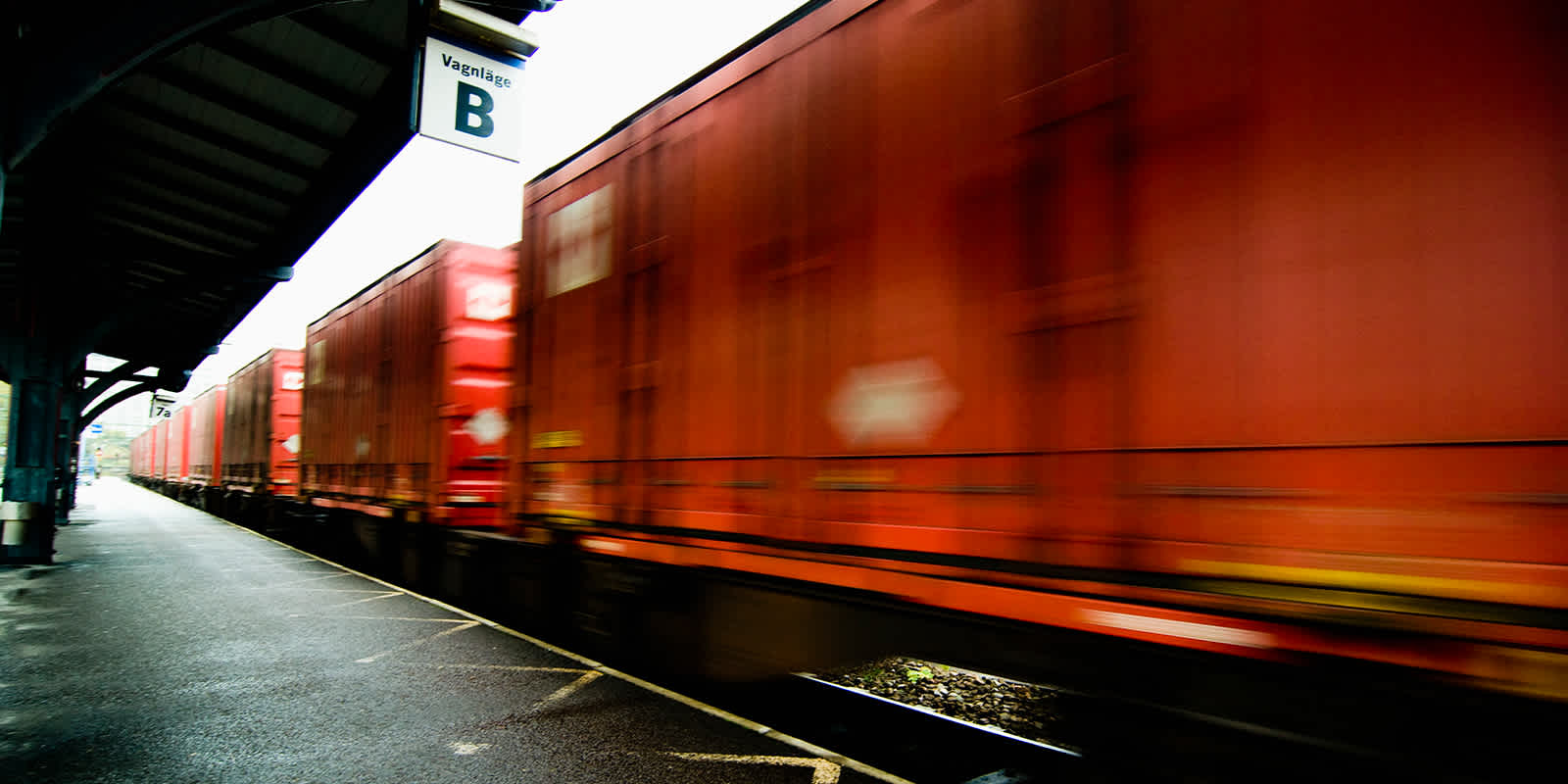
November 9, 2021
Rail’s Getting Out of the Way in Southern California
Rail’s Getting Out of the Way in Southern California
Amidst a broader supply chain crisis, all the major elements of the system are coming under scrutiny. Here we're giving a health check to the U.S. rail system. We find that good news in Southern California has to be balanced against new signs of concern in the rest of the country.
Rail is vital to goods handling in the U.S., accounting for 32.9% of tonnage hauled in 2018 according to Department of Transportation statistics, compared to 39.7% by trucks. Multimodal containers meanwhile accounted for 46.4% of railcars hauled in the 12 months to Oct. 27, 2021 according to the Surface Transportation Board (STB).
Railroad operators have not been immune the challenges facing logistics networks. Total volumes of containerized freight handled by the Class 1 railroads dipped by 1.4% YOY in Q3’21 according to STB data.
They have declined by a further 6.4% in the first four weeks of October with firms reportedly facing a variety of knock-on effects from logistics network congestion.
Other challenges have included “drayage shortages, warehouse productivity, equipment availability, labor force participation and rail network fluidity” according to one operator. Equipment availability may have been exacerbated by a shortage of wheeled chassis, outlined in Flexport’s Oct. 28 research, and an imbalance in their positioning.
The rail operators are finding new solutions. Two railroad firms are incentivizing weekend drop-offs of loaded containers at LA/Long Beach. The Port of Long Beach, meanwhile, is working with one operator to switch from truck to rail freight using inland port facilities at Salt Lake City.
The challenges and solutions raise the question as to whether it is possible to measure the health of the operations of the railroads. This report outlines three metrics based on STB data mentioned above that can provide a weekly signal of emerging issues or their dissipation.
Efficiency: Dwell Time by Yard or Terminal
The amount of time that railcars dwell at terminal yards provides an indication of network congestion. Flexport’s analysis of the 70 terminal yards covered by STB data can be used to discover rail nodes that are coming under stress.

Data through October 27, 2021, shown in Figure 1, illustrate four yards on routes out of major seaports where the indicator of stress has shifted recently.
The dwell time at BNSF’s yard in Barstow, California - inland of the ports of LA and Long Beach - is well above average but declining. A similar pattern can be seen at Union Pacific’s West Colton, CA facility (not shown). That would suggest either the operators are successfully clearing the yard and / or there is reduced inbound traffic from the ports. Either way the bottleneck effect may be weakening.
The opposite is the case further north, with rapidly increasing dwell times at BNSF’s Pasco, WA facility suggesting potential congestion risks for the ports of Seattle and Tacoma. Union Pacific’s Roseville terminal (not shown) is showing a similar trend. One container line has reportedly warned that the Puget Sound ports are over-capacity and along with its shipping alliance partners it has realigned a service to avoid the port.
Widening dwell times at Union Pacific’s Chicago yard are a concern given the structure of U.S. rail routes which hub around the city, though challenges are still well below the peaks of earlier in the year. Further west, Union Pacific’s Little Platte, NE facility (not shown) is also experiencing increased dwell times.
Finally, rising dwell times at CSX’s Waycross, GA yard comes as congestion at the port of Savannah, GA is starting to rise with boats clustering offshore. While further away, Norfolk Southern’s Macon yard (not shown) is also experiencing rising dwell times.
Capacity: Average Speed of Intermodal Trains
The average speed of intermodal trains, when shown at the rail company level, is a somewhat blunt-edged measure. It does, however, provide a guide to capacity given slower-moving networks have reduced railcar-miles available in a given week.

The absolute speed will vary depending on network topography, but a comparison to long term average speeds can reveal shifting operations by each operator. Figure 2 shows the range and unweighted average of all seven operators.
Average speeds have increased versus the long-term average in the past two months, rising to 104.1% of the 2017 - 2019 level in the four weeks to Oct. 31 (from 101.3% in August).
Capacity: Average Number of Empty Intermodal Cars Not Moved
Intermodal cars that are not moving represent unused capacity on the network. The figure, based on a system-wide, average number of intermodal cars on revenue duty (i.e. not in maintenance) during the week that have not moved for at least 48 hours, is again aggregated at the company level.
The statistic can be taken as a measure both of capacity and network fluidity. More idle cars indicate a reduction in usage of operational capacity in railcar-miles terms. This may also be a signal of network congestion changes. Rising (falling) idle cars may represent blockages (clearances) on the network.

Since the start of 2020 there have been four phases of development. Through most of 2000 the volume of idle cars was largely unchanged despite the ravages of the pandemic.
At the start of 2021 there was a period of rapidly rising and falling idle cars, potentially representing volatility linked to the emerging blockages at seaports. One cause was a significant swing in consumer spending towards goods and away from services, measured by Flexport’s Post-Covid Indicator, which brought a demand shock to logistics networks.
In summer of 2021, as congestion at the ports became more established, there was a run up once more potentially as rail operators struggled to adapt their networks to a new mode of operation.
More recently the number of intermodal cars idled fell to 1,171 system-wide in the four weeks to Oct. 27, the lowest figure on that basis since May but still 19.0% higher than the same period a year earlier. That may reflect the firm putting more cars to work to clear port backlogs, as illustrated in the dwell time data above, with more flexibility available.
Conclusion: Publicly available data can provide useful insights into the state of rail networks and the impact on other logistics network operations. The bottleneck associated with Southern Californian ports may be lessening but the rest of the U.S. rail network still has congestion.
Disclaimer: The contents of this report are made available for informational purposes only and should not be relied upon for any legal, business, or financial decisions. Flexport does not guarantee, represent, or warrant any of the contents of this report because they are based on our current beliefs, expectations, and assumptions, about which there can be no assurance due to various anticipated and unanticipated events that may occur. This report has been prepared to the best of our knowledge and research; however, the information presented herein may not reflect the most current regulatory or industry developments. Neither Flexport nor its advisors or affiliates shall be liable for any losses that arise in any way due to the reliance on the contents contained in this report.





